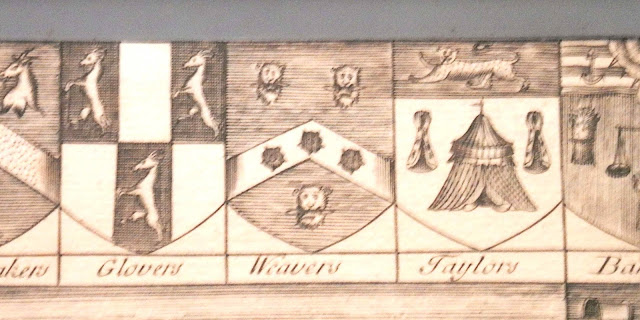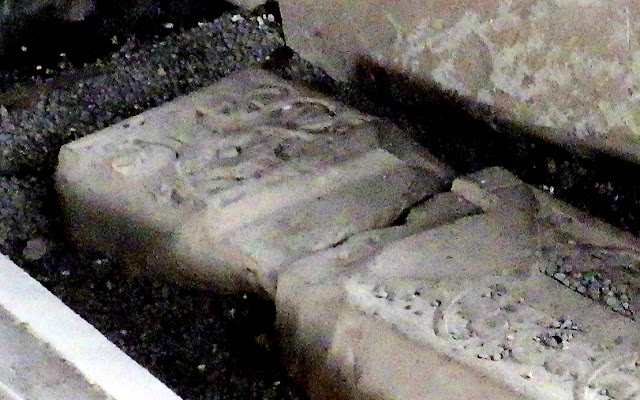On the first floor corridor of Shrewsbury Museum you'll see a number of historic local maps. One particular old map seems to have been sponsored by the town's guilds (guilds were associations of workers in a particular trade).
Along the top of the map, each sponsoring guild has a copy of its arms - and two stand out in particular for loggerheads lovers.
The Weavers' Guild (see picture above) are keen to establish their Shrewsbury identity, and feature three loggerheads, the town's symbol. The leopards carry some sort of tool of the trade in their mouths - perhaps a long needle, a shuttle, or maybe a shed-stick. (Does anyone know?)
The Goldsmiths (below) are more circumspect, and keep to two loggerheads.
+
To comment on this post, just use the Comments field down this page or email us direct.
To get an email alert into your inbox every time we make a new post (about once a week), just click 'Subscribe & Follow' (at the top of the column to the right on this page) and just fill in the form














